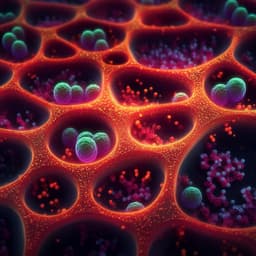
Biology
Engineering self-deliverable ribonucleoproteins for genome editing in the brain
K. Chen, E. C. Stahl, et al.
This groundbreaking research conducted by Kai Chen, Elizabeth C. Stahl, Min Hyung Kang, Bryant Xu, Ryan Allen, Marena Trinidad, and Jennifer A. Doudna introduces innovative self-deliverable CRISPR ribonucleoproteins that enhance genome editing in the brain. By engineering Cas9 proteins with effective cell-penetrating peptides, this study significantly improves editing efficacy in neural progenitor cells and demonstrates robust genome editing capabilities in live mice, paving the way for advanced brain therapies.
Playback language: English
Related Publications
Explore these studies to deepen your understanding of the subject.







